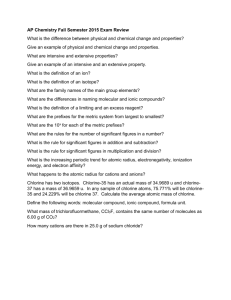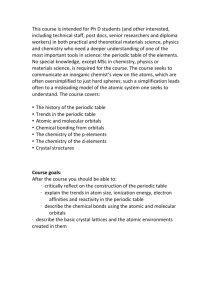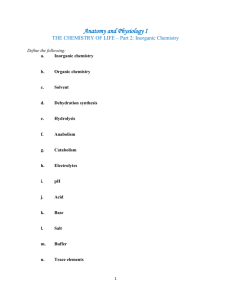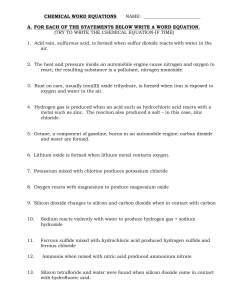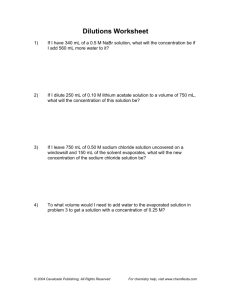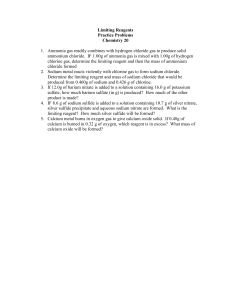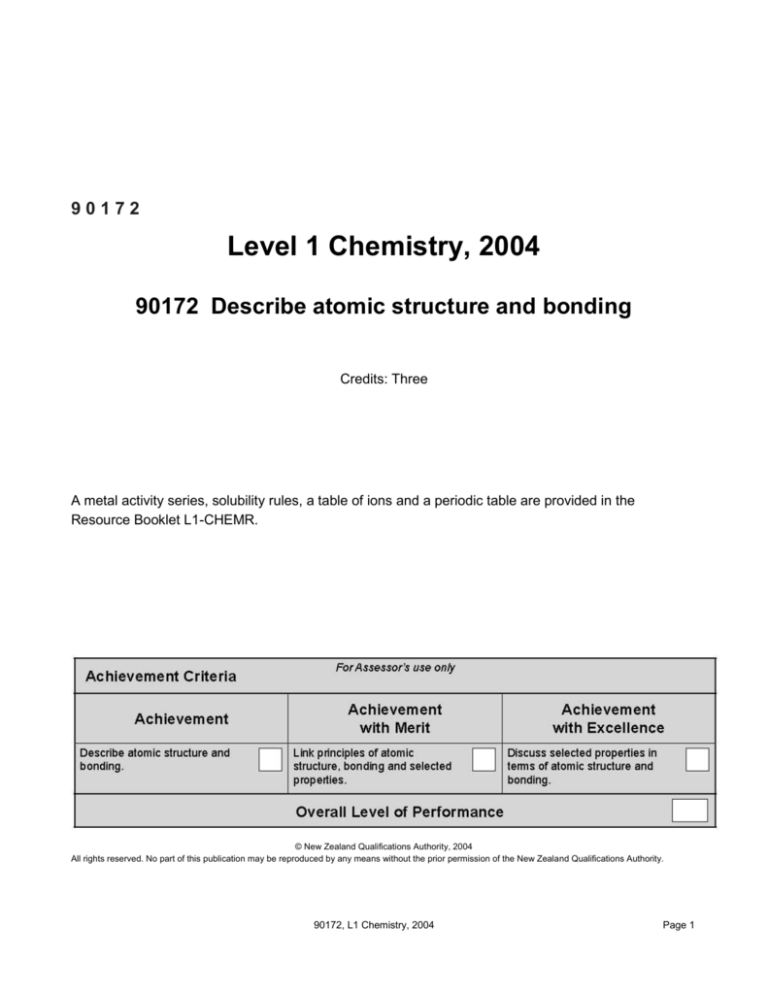
90172
Level 1 Chemistry, 2004
90172 Describe atomic structure and bonding
Credits: Three
A metal activity series, solubility rules, a table of ions and a periodic table are provided in the
Resource Booklet L1-CHEMR.
© New Zealand Qualifications Authority, 2004
All rights reserved. No part of this publication may be reproduced by any means without the prior permission of the New Zealand Qualifications Authority.
90172, L1 Chemistry, 2004
Page 1
You are advised to spend 30 minutes answering the questions in this booklet.
QUESTION ONE
(a) Complete the following table about the atomic structures of some elements. You should refer to the
Periodic Table in your Resource Booklet.
Atomic number Number of protons Number of electrons Number of neutrons Symbol
8
9
23
11
Na
Ag+
108
47
(b)
The electron arrangement of boron can be written as:
2, 3
Write the electron arrangement for the following.
(i)
a fluorine atom:
(ii)
an aluminium atom:
(iii)
an oxide ion:
(iv)
a lithium ion:
(c)
Magnesium, atomic number 12 and calcium, atomic number 20 are found close together in the
Periodic Table. Explain fully what their position in the periodic table means in terms of their
electron arrangements and their chemical properties.
(d)
Potassium-40 (40K) is used to date very old rocks. Potassium also exists as
atomic mass on the Periodic Table in the Resource Booklet is 39.1
39
K and 41K. The
Explain how potassium can exist as these three isotopes and discuss any conclusion that can be
drawn from the given data.
90172, L1 Chemistry, 2004
Page 2
QUESTION TWO
(a)
(b)
For each substance below, state whether the bonding is ionic or covalent and explain your
choice of bond type using the atomic structure of the atoms.
(i)
The bonding in chlorine (Cl2) is
because
(ii)
The bonding in lithium chloride (LiCl) is
because
(iii)
The bonding in sulfur chloride (SCl2) is
because
Chlorine can form compounds with the elements sodium and magnesium. The ratio of each of
these elements to chlorine is not the same in each compound. Explain this statement. Diagrams
may be included.
90172, L1 Chemistry, 2004
Page 3
QUESTION THREE
The melting point of oxygen (O2) is –219°C and magnesium oxide (MgO) 2800°C.
Discuss why the melting points of these two substances are so different.
QUESTION FOUR
The table below gives information about carbon dioxide and sodium chloride.
Compound
State at room temperature (25°C) Melting point °C
Carbon dioxide
Sodium chloride
(a)
–101
801
Gas
Solid
Draw diagrams to show how the particles would be arranged in each substance at room
temperature. Use
to represent carbon dioxide and
Carbon dioxide
to represent sodium chloride.
Sodium chloride
90172, L1 Chemistry, 2004
Page 4
Information about the electrical conductivity of carbon dioxide and sodium chloride is given in the table
below.
Compound
Carbon dioxide
Sodium chloride
(b)
Electrical conductivity
Solid
Liquid
Nil
Nil
Nil
Good
Discuss the electrical conductivity information for the two compounds, in terms of structure
and bonding.
90172, L1 Chemistry, 2004
Page 5
QUESTION FIVE
The Lewis diagram of a chlorine atom can be shown as:
Draw Lewis diagrams for the following atoms and molecules.
Oxygen atom O
Nitrogen molecule N2
Methane molecule CH4
Sulfur dioxide molecule SO2
90172, L1 Chemistry, 2004
Page 6




